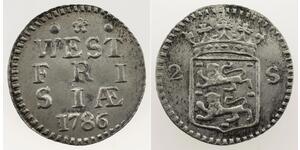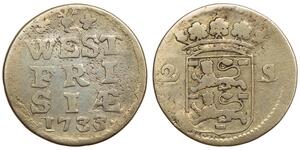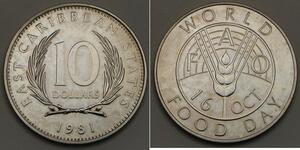Portuguese and British India
Portuguese India and British India were two distinct colonial territories in the Indian subcontinent, each with its own unique characteristics and historical significance. Here are some key facts about Portuguese and British India:
Portuguese India:
Colonial Period: Portuguese India refers to the territories and trading posts established by Portugal in the Indian subcontinent during the Age of Discovery.
Establishment: Portuguese explorers, including Vasco da Gama, first reached the Indian subcontinent in the late 15th century, paving the way for Portuguese colonization.
Territories: Portuguese India included territories such as Goa, Daman, and Diu on the western coast of India, as well as enclaves in other regions such as Kochi (Cochin) in Kerala and Dadra and Nagar Haveli.
Cultural Influence: Portuguese India had a significant cultural impact on the region.
Architecture: Portuguese colonial architecture left a lasting imprint on the landscape of Goa and other territories. Churches, forts, administrative buildings, and private residences built during the Portuguese era showcase distinctive architectural styles, blending European, Indian, and local influences. Examples include the Basilica of Bom Jesus, Se Cathedral, and Chapora Fort.
Religion: The Portuguese brought Roman Catholicism to India, and Goa became a center for missionary activities. Many churches and cathedrals were constructed, and religious festivals such as Christmas and Easter became widely celebrated. The influence of Catholicism is still evident in the religious practices, traditions, and festivals of Goan Catholics.
Language and Cuisine: Portuguese influence extended to language and cuisine. Portuguese words and phrases entered the local Konkani language, and Portuguese culinary techniques and ingredients were incorporated into Goan cuisine. Dishes like vindaloo, sorpotel, and bebinca bear Portuguese influence and remain popular in Goan cuisine today.
Music and Dance: Portuguese music and dance forms, such as fado and corridinho, were introduced to Goa and became integrated into local cultural expressions. Traditional Goan folk songs and dances often feature elements influenced by Portuguese musical styles and rhythms.
Art and Craftsmanship: Portuguese patronage of the arts fostered the development of local craftsmanship and artistic traditions. Goan artists and artisans produced works in various mediums, including painting, wood carving, and tile-making, blending Portuguese techniques with indigenous styles.
Education and Administration: The Portuguese established educational institutions and administrative structures in their colonies, contributing to the spread of literacy and modern governance practices. The introduction of printing presses facilitated the publication of books, newspapers, and religious texts in the local languages.
Decline: Portuguese control in India began to decline in the 17th century with the rise of British and Dutch colonial powers. Goa, the capital of Portuguese India, was the last territory to be annexed by India in 1961.
British India:
Colonial Period: British India refers to the territories of the Indian subcontinent under British colonial rule from the mid-18th century until independence in 1947.
Establishment: The British East India Company played a significant role in establishing British control in India, initially through trading posts and later through direct rule.
Territories: British India encompassed a vast territory, including present-day India, Pakistan, Bangladesh, and parts of Myanmar (Burma).
Impact: British rule in India had a profound impact on the region.
Economic Exploitation: British colonial policies led to the exploitation of India's resources for the benefit of the British Empire. India's rich agricultural, mineral, and industrial resources were harnessed to meet the needs of British industries and markets. Land revenue systems, such as the Permanent Settlement and Ryotwari System, imposed heavy taxes on Indian farmers, leading to impoverishment and economic distress.
Infrastructure Development: The British introduced modern infrastructure such as railways, roads, telegraph lines, and ports, which facilitated transportation, communication, and trade within India and with other parts of the British Empire. While these developments were aimed at serving British interests, they also contributed to India's economic integration and urbanization.
Social and Cultural Changes: British rule brought significant social and cultural changes to Indian society. English education, legal systems, and administrative structures were introduced, creating a class of English-educated elite. Social reform movements emerged in response to British influence, addressing issues such as caste discrimination, child marriage, and widow remarriage.
Political Impact: The British implemented a system of indirect rule through local intermediaries and princely states, while directly administering areas known as British India. The establishment of British institutions, such as the Indian Civil Service and legislative councils, provided avenues for Indian participation in governance. However, political power remained concentrated in British hands, leading to demands for self-rule and independence.
Nationalism and Independence Movement: British rule fueled the growth of Indian nationalism and the struggle for independence. Influential leaders such as Mahatma Gandhi, Jawaharlal Nehru, and Subhas Chandra Bose mobilized mass movements, protests, and campaigns against British colonial rule. The Indian National Congress and other political organizations played key roles in advocating for self-rule and independence.
Partition and Legacy: The partition of India in 1947, which resulted in the creation of India and Pakistan, was a consequence of British policies and communal tensions. Independence marked the end of British colonial rule in India but also left a legacy of partition, communal violence, and unresolved issues that continue to shape the region's politics and society.
Independence: India gained independence from British rule on August 15, 1947, following a non-violent struggle led by Mahatma Gandhi and other leaders of the Indian independence movement. Pakistan, comprising East and West Pakistan (now Bangladesh and Pakistan), also gained independence at the same time.
Overall, Portuguese India and British India represent significant chapters in the history of colonialism in the Indian subcontinent, each leaving behind a legacy that continues to shape the region's cultural, political, and social landscape.
You may be interested in following coins
2025-05-24
- New coin is added to 2 Stuiver Netherlands Silver
2 Stuiver Netherlands Silver
group has 33 coins / 33 prices
⇑
Netherlands / West-Friesland - 2 Stuivers 1733
2025-06-20
-
New coins
New coins from
Save seller - sloveniacoins
.
One of them is
One of them is
EAST CARIBBEAN STATES 10 Dollars 1981 - Cu-Ni - FAO / World Food Day - UNC -171*








